Given the historical inequalities that low-income communities and communities of color have faced in the U.S., transportation equity envisions a future where all individuals, regardless of their life circumstances, have the mobility options needed to thrive. Download the full literature review of NITC research in transportation equity here, or you can download our two-page summary here.
In a series of NITC Research Roadmaps, we surveyed a decade of contributions across six areas of transportation research funded by the National Institute for Transportation and Communities (NITC).
Equity in Infrastructure
Many infrastructure-focused NITC reports offer a cost-benefit analysis of updating infrastructure to address transportation inequities. For example, approximately 30% of transit riders rely heavily on cash, and an examination of automated payment systems for public transit found it increased access and was operationally cost-effective to retain cash payment options on buses.
Another dimension of infrastructure explored is transportation planning for optimizing accessibility to areas outside of large urban cities. One study examined the impact of transportation infrastructure and economic growth in Collin County, Texas on quality of life outcomes for residents. Although employment opportunities were increasing in the fast-growing Dallas suburb, poor and outdated transportation infrastructure prevented residents from accessing the full benefits of the economic "boom." For similar issues in rural regions, NITC work has empowered a network of planners in western gateway and natural amenity region (GNAR) communities. Rapid growth in tourism has caused unique transportation challenges for rural residents and access to amenities.
Finally, two NITC projects addressed transportation equity at bus stops. One study found that improved bus stop features (e.g. shelters, curb cutouts, access ramps, and benches) increased ridership and reduced demand for ADA paratransit. The authors conclude that physical features of bus stops are fundamental to equitable access, particularly for riders with mobility-based disabilities, and should not be treated as "amenities." Another ranked the "livability" of bus stops in Eugene, Oregon to explore what factors impacted people's choice to use public transportation, most notably a location in a quiet area, access to pedestrian paths that connect to other areas in the city, safety, and protection from adverse weather.
Accessibility
Other studies of transit fare equity found that fares based on distance traveled would benefit low-income individuals, older populations, and communities of color. However, this outcome was found to be geographically uneven, so that distance-based fare structures might have a negative impact if they live on the outskirts of urban areas. Planners and policy-makers need to eliminate common barriers to equitable public transit access, including improving both tactile and verbal information at stops and onboard, adding sidewalks and crosswalks to areas surrounding stops, and promptly removing snow on sidewalks and in crosswalks around stops.
Technology-based concerns have been explored in several studies, including transportation limitations for older adults which found that while the COVID-19 pandemic improved technology use for many older adults, barriers still exist for low-income older adults who are less likely to use the Internet or technology to access transportation resources. Policy strategies could support older adults’ transportation independence through education, and increased access to affordable door-to-door transportation options such as ride-hailing services and vanpooling. Another project examined the use of ridehail services linking clients to nonprofit services and found that some clients did not have access to a smartphone or credit card, both of which are necessary for using ridehail services.
There are also accessibility concerns around cycling in urban areas and using bikeshare programs. One NITC project found that women and cyclists of color face challenges like personal safety concerns, gendered harassment, parenting, racial profiling, lack of women and minorities in both cycling culture and in city and transportation planning meetings. Updated infrastructure such as protected bike lanes, bikeshare stations, and street lighting could help mitigate some of these concerns. Another study examined equitable access to bikeshare programs across the U.S. and reported several barriers for low-income and minority populations, including programmatic costs, technology-dependent payment systems, and poor or nonexistent investment in infrastructure in those neighborhoods. Increased education and outreach in multiple languages, standardized rental structures, and low-income fare programs could overcome some of these barriers.
Safety
NITC research has a strong focus on safety, including physical safety while biking, walking, and riding transit and those concerns further exacerbated by racism and gendered/sexual harassment. One study on collision and non-collision incidents involving buses found that the majority of incidents occurred at “stop segments” of bus routes: stop signs, intersections, and bus stops. Both types of incidents were higher at route turns, and the most severe (e.g., a bus hitting a pedestrian) occurred most frequently at intersections. Researchers recommend updating infrastructure to improve safety, including additional street lighting and lighting at transit stops, new or repaired sidewalks and crosswalks, and barriers near bus stops to maintain space between pedestrians and moving buses. They also recommend improved pedestrian warning technologies at crosswalks and bus stops to alert pedestrians of buses turning, pulling in or out, or deploying ramps.
Another study explored the effect of drivers’ attitudes toward bicyclists on their self-reported safety behaviors, and found that survey respondents with a pro-driver implicit bias were associated with anti-bicyclist explicit attitudes. Recommendations to improve bicyclist safety include increasing the number of designated/protected bike lanes and clarifying passing laws for drivers passing cyclists.
Historical Inequities
Our transportation research has studied gentrification, neighborhood development and change, and impacts on historically underrepresented communities, including Black, Indigenous, and people of color (BIPOC) communities, immigrants, and people with disabilities. In a report on gentrification and neighborhood displacement that compared case studies in two low-income Latino neighborhoods (Fruitvale Transit Village in Oakland, CA and MacArthur Park METRO Transit-Oriented Development in Los Angeles, CA), researchers found that transit-oriented development projects have the ability to lead neighborhood revitalization projects. When planned with equitable outcomes in mind, these investments have the potential to increase access to regional transportation systems and affordable housing and social services, as well as support local Latino-owned businesses. Project developers should take guidance from community members so that transit projects build upon neighborhood assets and existing capital.
Conclusion
Overall, NITC research demonstrates that increasing the representation of communities of color, underserved populations, and women in city and transportation decision-making can effect the greatest positive outcomes for those communities.
What are the impacts of our research on advancing equitable mobility opportunities and investments? Learn more about some impact stories below.
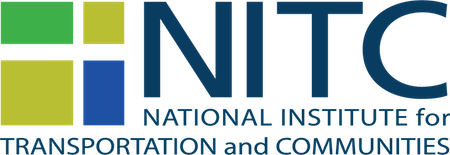
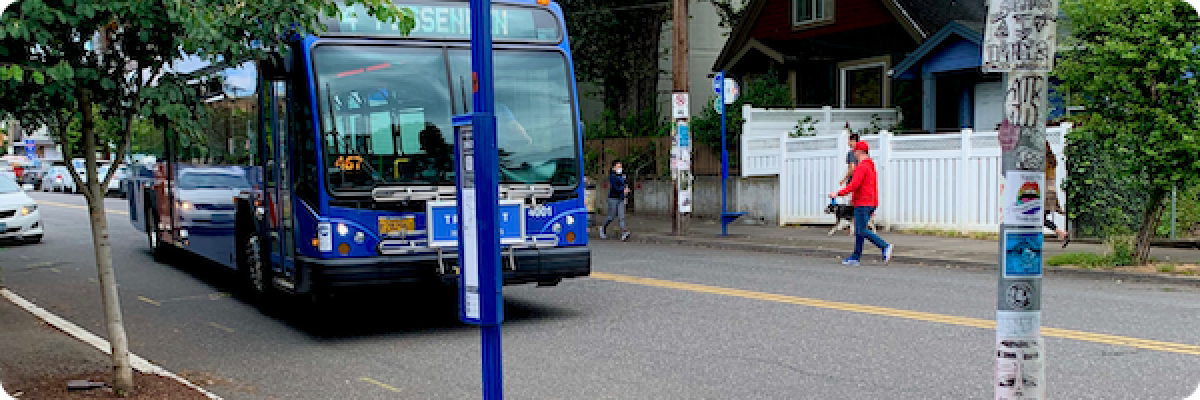
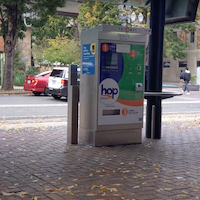 Our multi-year study on automated transit fare collection offers a key finding that won't surprise you: despite the convenience, the rush toward cashless fare systems has created barriers for lower-income riders seeking to use transit. Results from focus groups, surveys, and a review of current transit agency practices suggest that continuing to accept cash is a crucial way to keep transit accessible. However, dealing with cash has drawbacks: it’s time intensive and expensive. Using a detailed cost-benefit model, the research team, lead by PSU's Aaron Golub, explored the costs for agencies to maintain some cash options and found that some simple approaches can be quite effective. The best bang for the agency's buck? Cash collection on board buses.
Our multi-year study on automated transit fare collection offers a key finding that won't surprise you: despite the convenience, the rush toward cashless fare systems has created barriers for lower-income riders seeking to use transit. Results from focus groups, surveys, and a review of current transit agency practices suggest that continuing to accept cash is a crucial way to keep transit accessible. However, dealing with cash has drawbacks: it’s time intensive and expensive. Using a detailed cost-benefit model, the research team, lead by PSU's Aaron Golub, explored the costs for agencies to maintain some cash options and found that some simple approaches can be quite effective. The best bang for the agency's buck? Cash collection on board buses.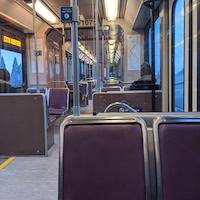 What is the quality of travel data for underrepresented, marginalized populations? The issues go deeper than creating slicker algorithms: In a world with deep-rooted systemic inequity, transportation professionals must understand contextual factors and approach data collection with sensitivity. Data from travel surveys are used to inform investments and craft urban policies. It is critical that hard-to-reach populations—such as low-income, minority, and transit-dependent people—have their travel behavior accurately reflected. This study explored the current limitations and opportunities in household travel survey methods.
What is the quality of travel data for underrepresented, marginalized populations? The issues go deeper than creating slicker algorithms: In a world with deep-rooted systemic inequity, transportation professionals must understand contextual factors and approach data collection with sensitivity. Data from travel surveys are used to inform investments and craft urban policies. It is critical that hard-to-reach populations—such as low-income, minority, and transit-dependent people—have their travel behavior accurately reflected. This study explored the current limitations and opportunities in household travel survey methods. 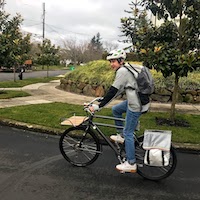 Widespread adoption of bike commuting could improve public health through increased physical activity and reduced carbon emissions, as well as ease the burden on congested roads. However different lifestyle demands, physical ableness, and varied topography create an unequal playing field that prevents many from replacing their car trips. E-bikes could bridge this gap. If substituted for car use, e-bikes could substantially improve efficiency in the transportation system while creating a more inclusive biking culture for people of all ages and abilities.
Widespread adoption of bike commuting could improve public health through increased physical activity and reduced carbon emissions, as well as ease the burden on congested roads. However different lifestyle demands, physical ableness, and varied topography create an unequal playing field that prevents many from replacing their car trips. E-bikes could bridge this gap. If substituted for car use, e-bikes could substantially improve efficiency in the transportation system while creating a more inclusive biking culture for people of all ages and abilities.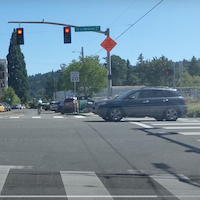 Roughly 2,000 former inmates who return to communities every day in the U.S. face significant transportation burdens getting to and from job interviews and their many required parole-related appointments. To ease their reintegration into society, University of Texas at Arlington researchers partnered with Dallas, Texas reentry broker Unlocking DOORS to develop a unique solution: three computer models that optimize the locations of housing and service providers to ensure that former offenders can actually, realistically, make it everywhere they need to be.
Roughly 2,000 former inmates who return to communities every day in the U.S. face significant transportation burdens getting to and from job interviews and their many required parole-related appointments. To ease their reintegration into society, University of Texas at Arlington researchers partnered with Dallas, Texas reentry broker Unlocking DOORS to develop a unique solution: three computer models that optimize the locations of housing and service providers to ensure that former offenders can actually, realistically, make it everywhere they need to be.

